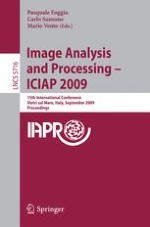This book constitutes the refereed proceedings of the 15th International Conference on Image Analysis and Processing, ICIAP 2009, held in Vietri sul Mare, Italy, in September 2009. The 107 revised full papers presented together with 3 invited papers were carefully reviewed and selected from 168 submissions. The papers are organized in topical sections on computer graphics and image processing, low and middle level processing, 2D and 3D segmentation, feature extraction and image analysis, object detection and recognition, video analysis and processing, pattern analysis and classification, learning, graphs and trees, applications, shape analysis, face analysis, medical imaging, and image analysis and pattern recognition.
